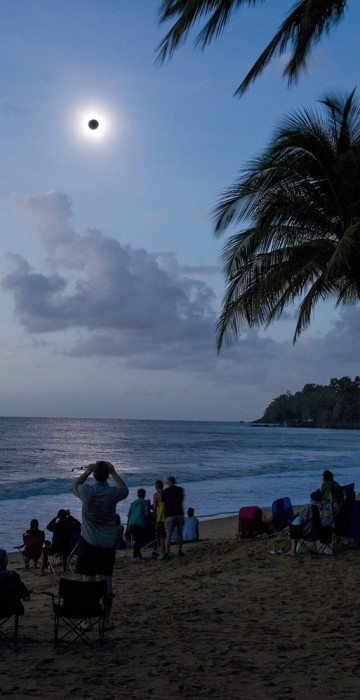
Science News
Month in Space: November 2012

Dark delight
Spectators watch a total solar eclipse from Ellis Beach in Queensland, Australia, on Nov. 14. Eclipse-hunters flocked to northeast Australia to witness the first total solar eclipse in Australia in a decade and the last eclipse of its kind that anyone will see until 2015.
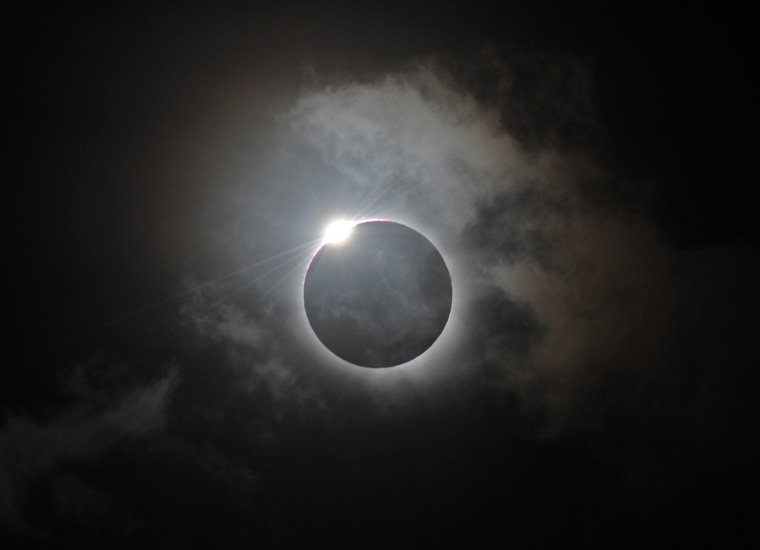
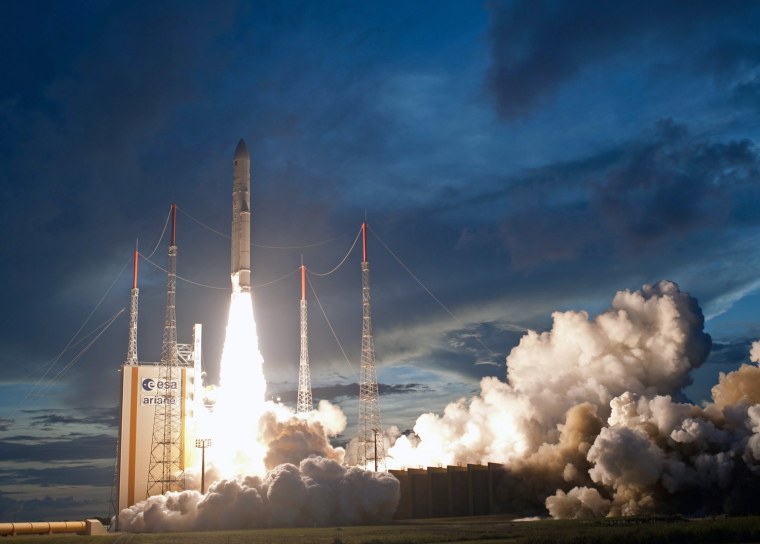
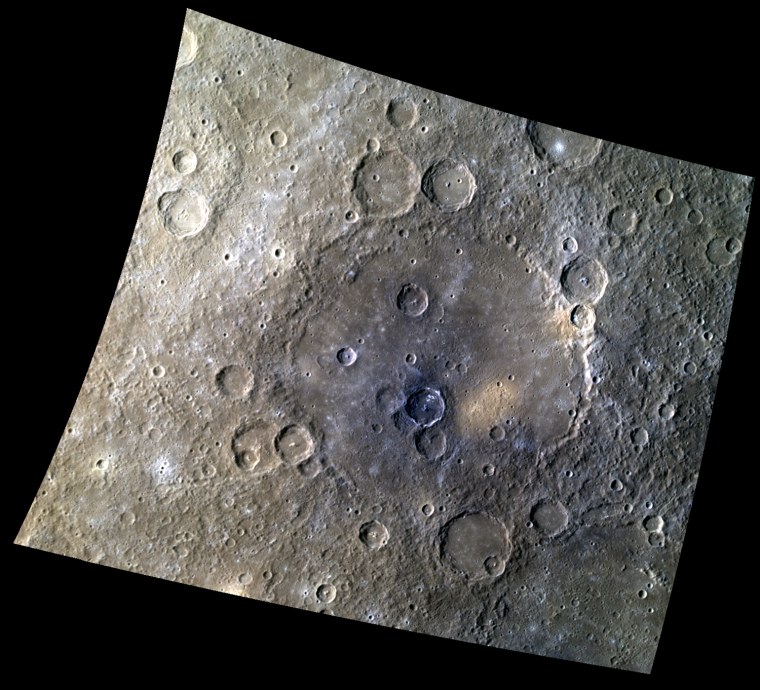
Raphael’s palette on Mercury
The impact basin Raphael on Mercury is seen in this image from NASA's Messenger probe, released Nov. 9. The colorful view shows a diversity of composition within the volcanic plains that flooded the basin's floor. Hollows appear to be forming in the low-reflectance material within the smaller, roughly 40-kilometer-wide (25-mile-wide) crater just south of the center of the basin.

History in the making
Workers carry a banner full of signatures on Nov. 2 while they follow the space shuttle Atlantis along the path to its new home at the Kennedy Space Center Visitor Complex in Florida. Atlantis was the last of NASA's space shuttles to fly in space, in July 2011, and also the last to be transferred for museum display.
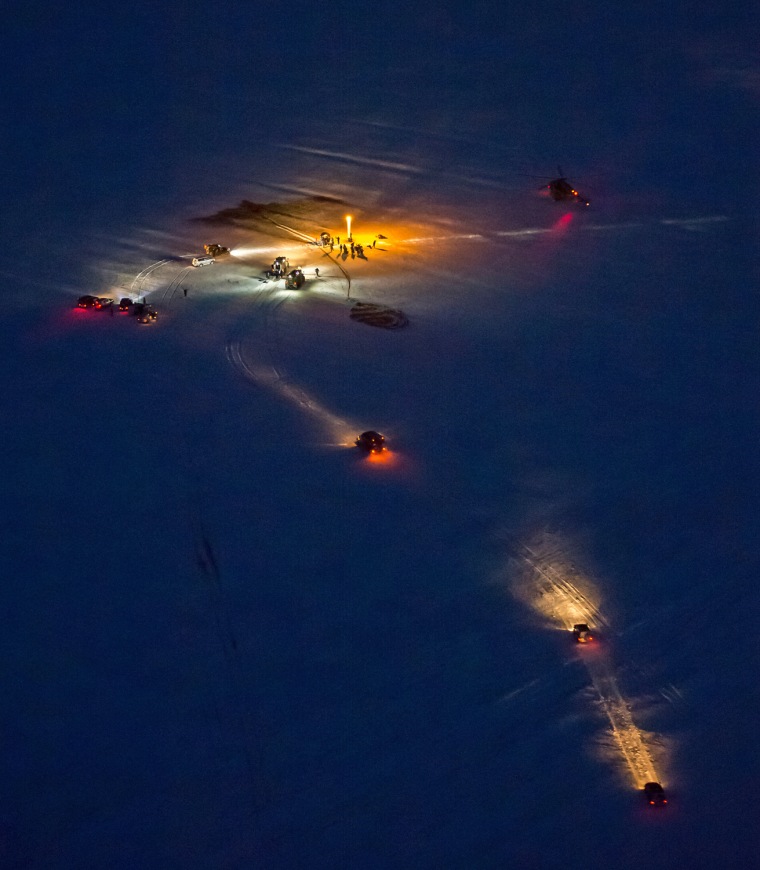
Touchdown in the dark
Russian support personnel and news media representatives approach the Soyuz TMA-05M spacecraft shortly after its landing in a remote area of Kazakhstan on Nov. 19. The Soyuz craft brought NASA's Sunita Williams, Japan's Akihiko Hoshide and Russia's Yuri Malenchenko back to Earth after their four-month stint on the International Space Station.
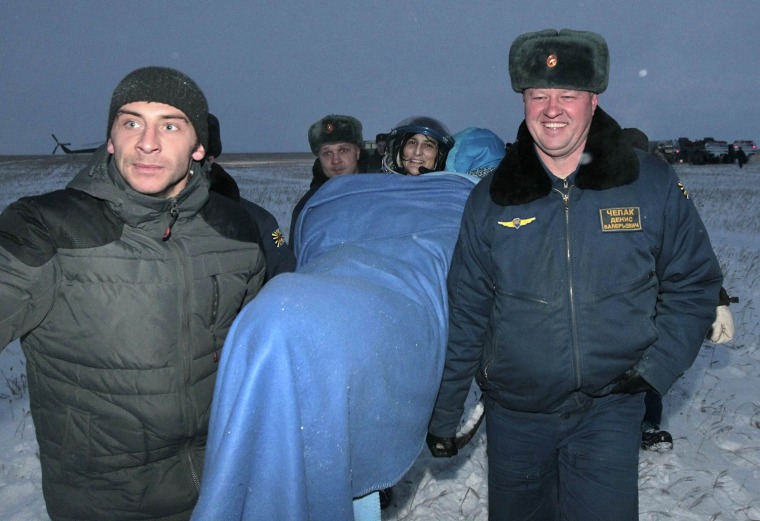
Astronaut's wild ride
A ground rescue team carries NASA astronaut Sunita Williams away from the site in central Kazakhstan where she and two crewmates from the International Space Station landed on Nov. 19. Spacefliers are traditionally carried away from their Soyuz craft to ease their readjustment to Earth's gravity, and Williams was bundled up to keep her warm amid chilly temperatures.


Swirling vortex
A polar storm on Saturn is seen in this image taken by NASA's Cassini spacecraft on Nov. 27. It is a raw and unprocessed image. Storms like this are common on many of the solar system's planets, including Saturn. Cassini, the first spacecraft to orbit Saturn, was launched in 1997 and arrived at the gas giant in July 2004.
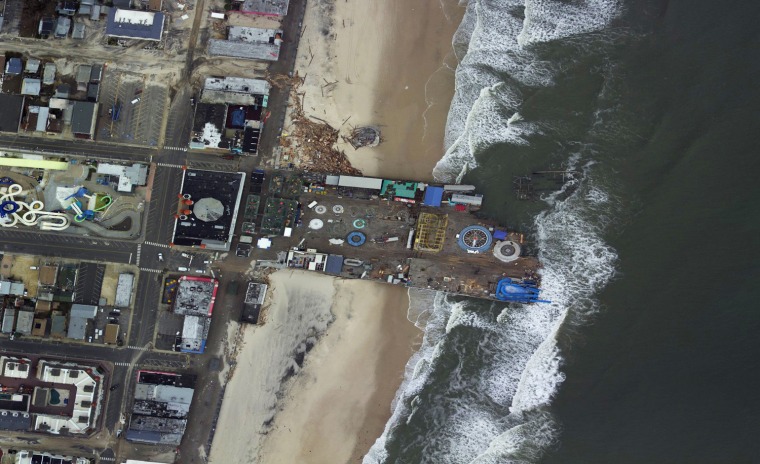
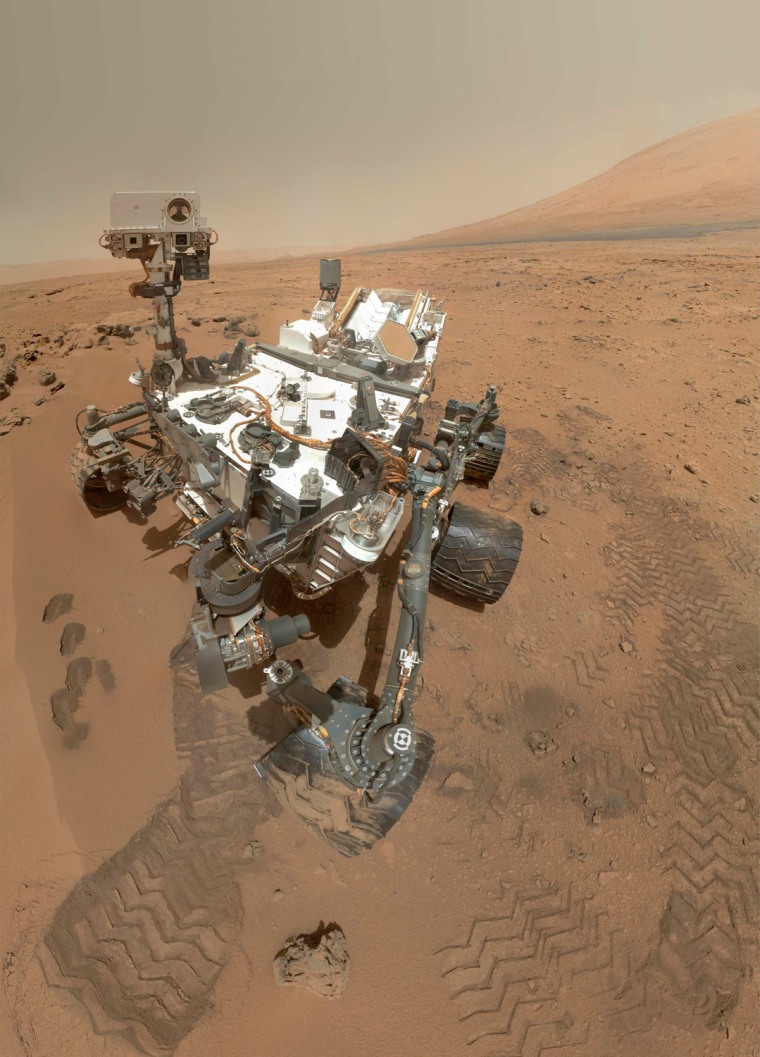
Wait ... who took this photo?
NASA's Curiosity rover used its Mars Hand Lens Imager, or MAHLI, to capture the set of thumbnail images stitched together to create this full-color self-portrait on Oct. 31. MAHLI is mounted on a 7-foot-long robotic arm, but because of the way the images were taken, the imager and the extended robot arm are not visible in this mosaic.
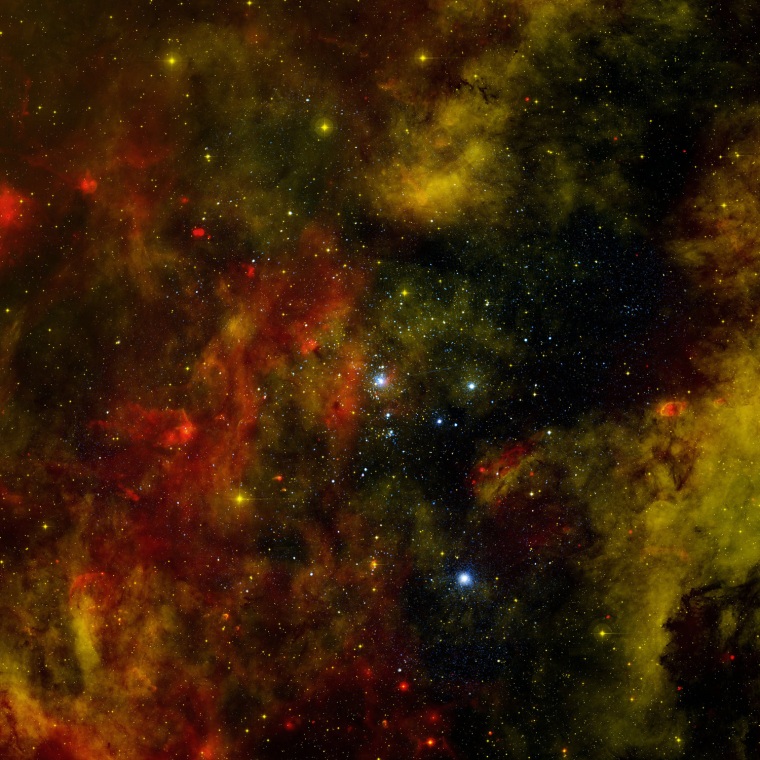
Cosmic colors
The Milky Way and other galaxies in the universe harbor many young star clusters and associations that each contain hundreds to thousands of hot, massive, young stars. This color-coded image from NASA's Chandra X-ray Observatory, released Nov. 12, shows the Cygnus OB2 star cluster.
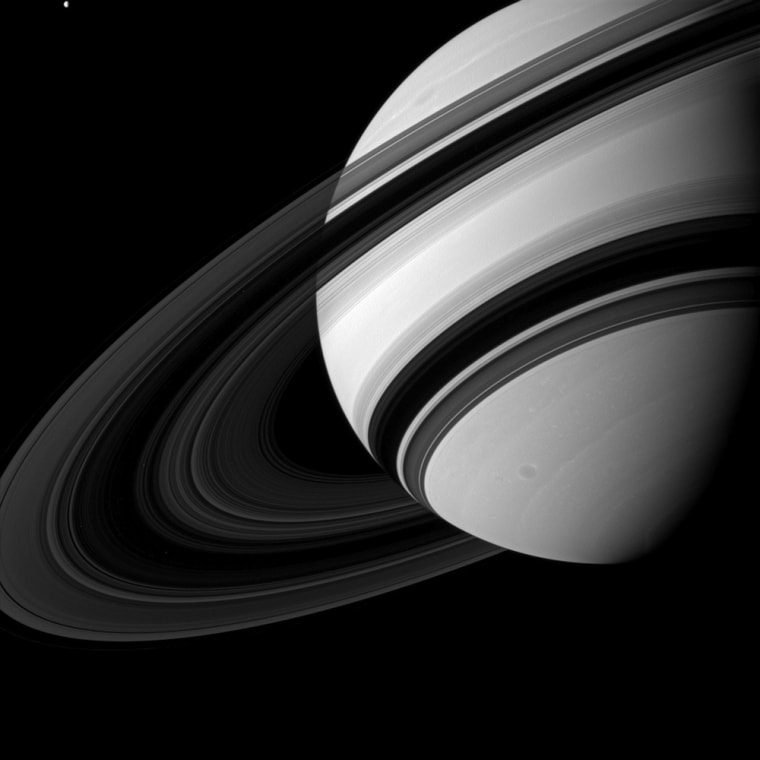
Tiny moon
Saturn's moon Tethys appears near Saturn, at the top left edge of the frame, in an image captured by the Cassini orbiter's camera system. Tethys (660 miles or 1062 kilometers across) is little more than a dot compared with the storms visible on Saturn's surface. The picture was taken on Aug. 19 and released by Cassini's imaging team on Nov. 26.
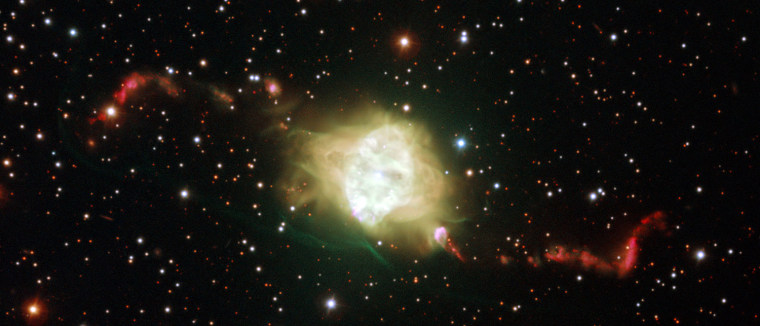
Cosmic jets
A photo released by the European Southern Observatory on Nov. 6 shows the planetary nebula Fleming 1 in the constellation Centaurus. This striking object is a glowing cloud of gas around a dying star. New observations, made with the ESO's Very Large Telescope, have led astronomers to conclude that two white dwarf stars lie at the heart of this object. Their orbital motions can explain the remarkably symmetric structures of the jets in the surrounding gas clouds in this and similar objects.
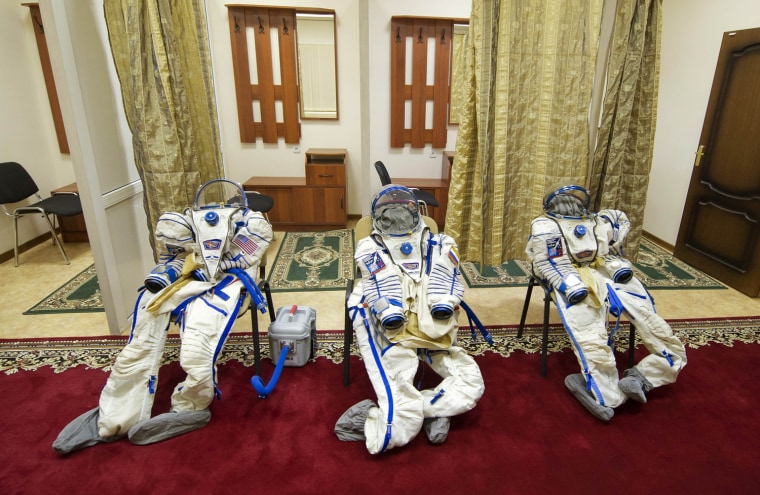
Gentlemen, your suits await...
Spacesuits are laid out for NASA astronaut Thomas Marshburn, Canadian astronaut Chris Hadfield and Russian cosmonaut Roman Romanenko before an exam on a simulator of the International Space Station at the Russian cosmonaut training center at Star City outside Moscow on Nov. 28. The three-man crew is scheduled to fly to the International Space Station in December.